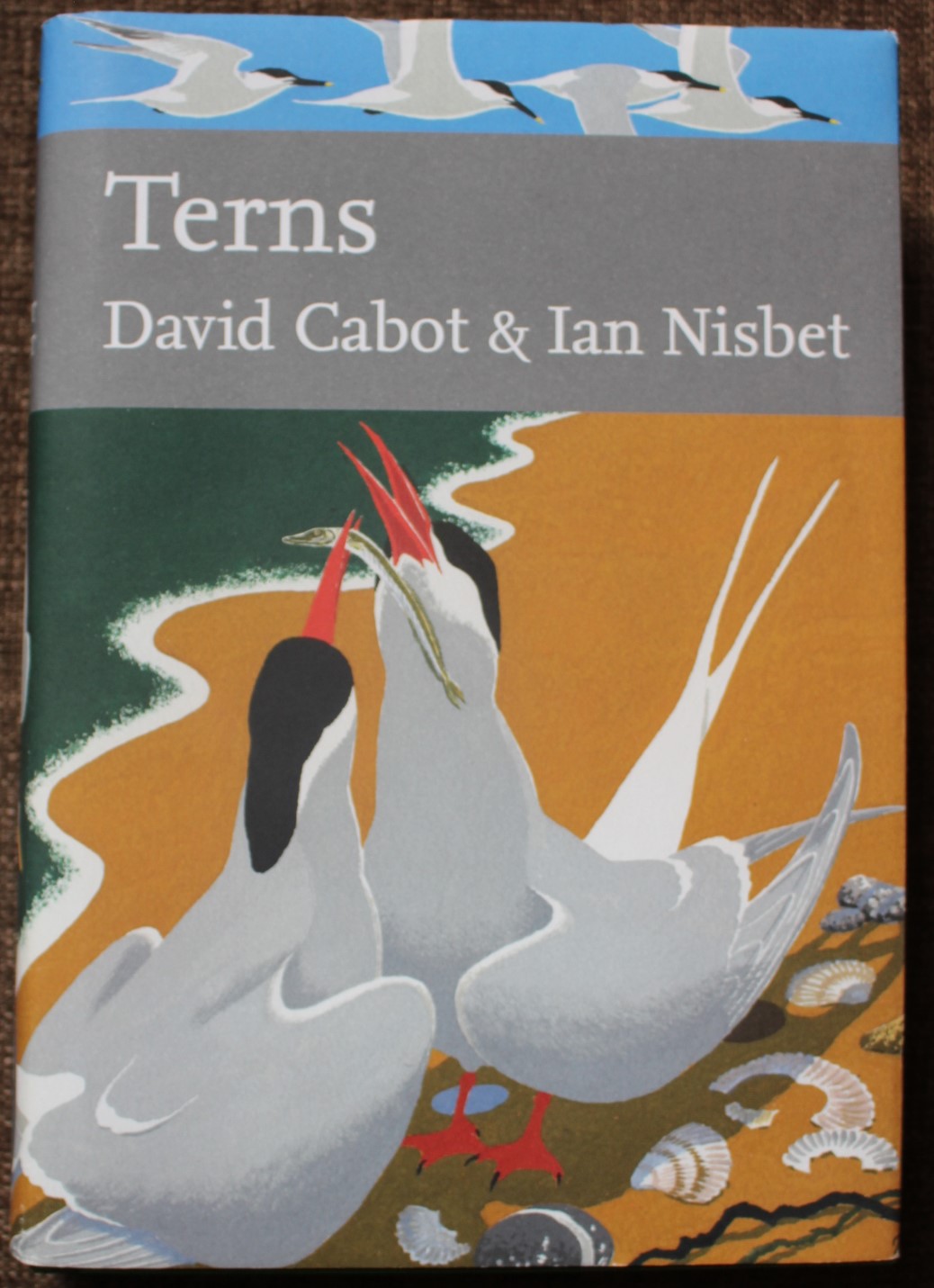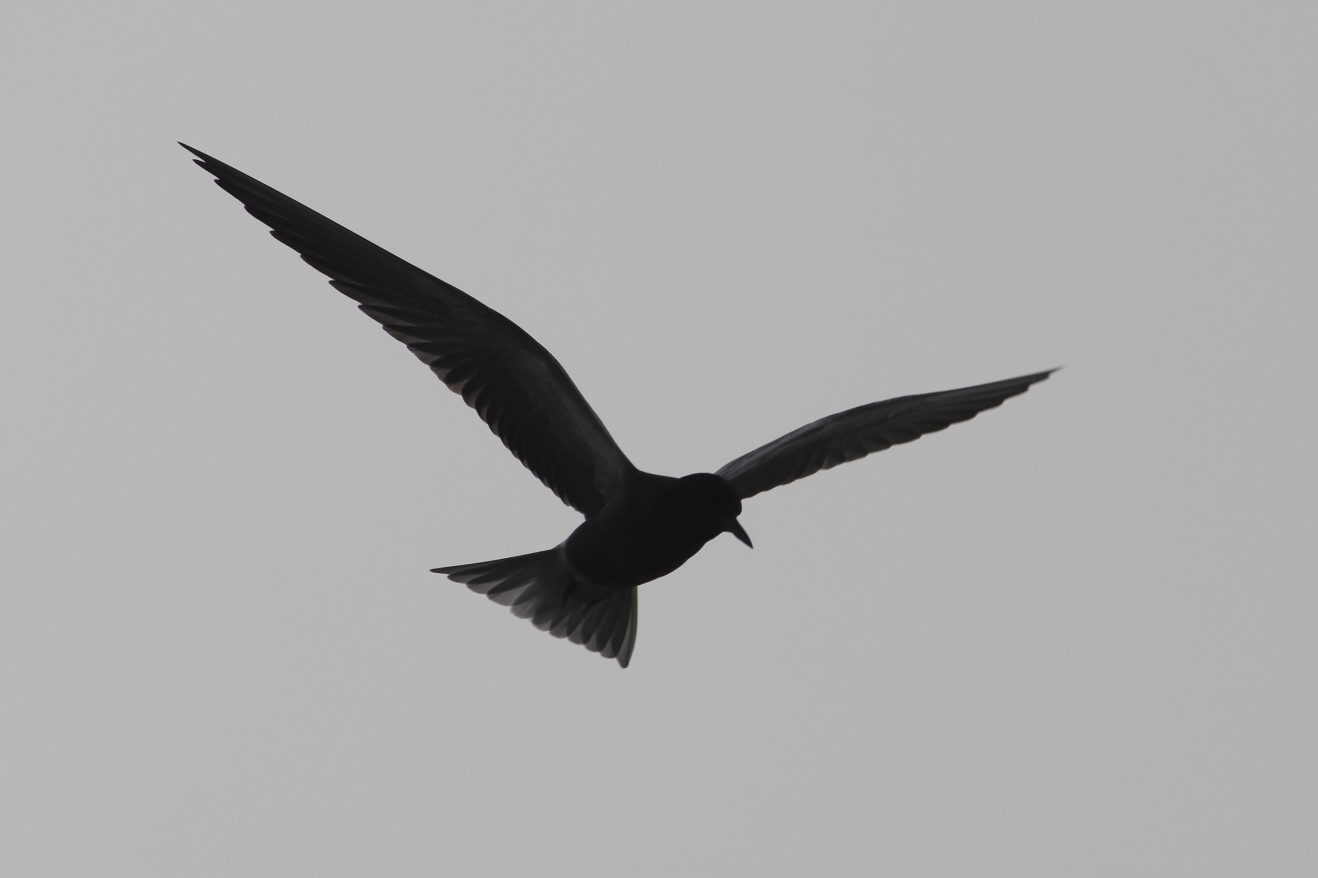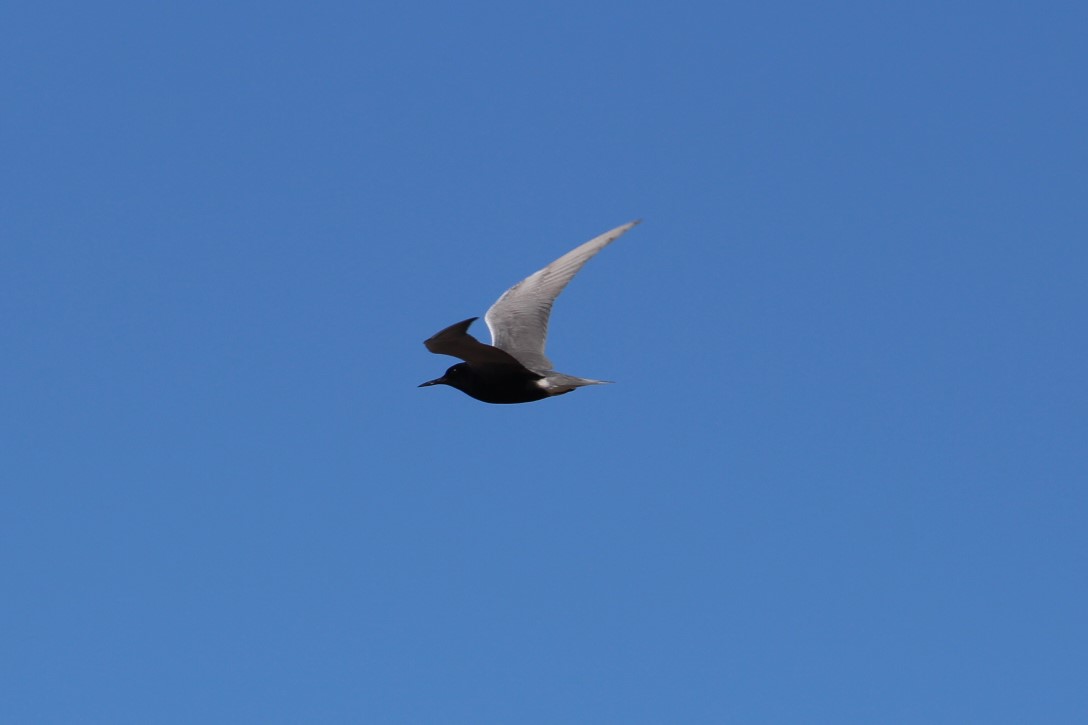
I remember the first time that I saw a Tern in Southern Ontario, and believed that I was seeing an especially rare sighting. In my head at the time (this was almost ten years ago) Terns were oceanic birds that migrated huge distances across the waves, and were either in the middle of the Arctic Ocean, or amid stormy Southern seas. This idea of Tern distribution and migration was based on the only Tern species that I knew: the Arctic Tern (Sterna paradisaea) and even then only loosely. The Tern I observed flying and diving for fish in Waterford, Ontario was most likely not an Arctic Tern, but rather a Common Tern (Sterna hirundo). Since that perspective-changing observation, I have been looking forward to learning more about these beautiful birds. Thanks to this excellent book by David Cabot and Ian Nisbet, I now have a much greater grasp on Tern biology, ecology, and life history.
Terns is part of a long-running natural history series produced in the UK called The New Naturalist Library. These books are beautiful to look at, both outside and inside and I love having some of this series displayed on my bookshelf. The subtitle of the series is “A Survey of British Natural History” and I will admit to being originally concerned that the content of the books would be not very relevant to a naturalist on the other side of the Atlantic Ocean. For this book in particular, that fear was unfounded. While the focus is undoubtedly British and sometimes very explicitly so, the coverage of this book is extremely valuable to understanding Terns across the world.

The book begins with a chapter titled “Terns of the World”, which gives a brief overview of what the authors consider the “true terns” which includes 39 species, and excludes the noddies (genera Anous and Gygis). This brings me to my first complaint in what I consider an excellent book: the use of scientific names (or lack of use). This first chapter is the only chapter to regularly use scientific names when mentioning related terns (ie. genera) or species. Some might find that scientific names break the flow of a book, and I’m sure that’s why it’s written without them later on (for the most part) but I find it incredibly helpful to have the scientific names referenced more often than once at the beginning of a book. I like to remember scientific names of species, it makes finding information about the species a lot easier, and it can even tell you things right in the name itself: members of a Genus are more closely related to each other than members of a different Genus. To use some Tern species as examples: the Arctic Tern (Sterna paradisaea) is more closely related to the Common (Sterna hirundo) and Roseate (Sterna dougallii) Terns (note the same Genus for all three species) than all three are to the Sandwich Tern (Thalasseus sandvicensis) (different Genus). I think the lack of scientific names in most chapters seems out of place given that the text is fairly in-depth and scientific. Even if they didn’t want the flow thrown off for most of the text, I would have liked it if they included the scientific names for the species that were the focused subject of later chapters (see below) even just in the chapter titles for easy reference. In any case, this first chapter does a great job of introducing the terns as a group, offering overviews of the various genera and setting the stage for the following chapters.
The next three chapters continue the theme of giving information on Terns as a whole, and not just the species that are common in Britain and Ireland. They are titled “Food and Foraging”, “Breeding Biology”, and “Migration”. All were full of fascinating information and surprises. “Food and Foraging” described the various ways that Terns find and capture prey (all Terns are predators of mostly aquatic prey except for the Gull-billed Tern (Gelochelidon nilotica) which feeds on mostly terrestrial prey). The chapter conveyed well the foraging strategies of Terns from their perspective, demonstrating how difficult it is for birds to find and catch fish out of water that is often deep. Something I never really considered before is how Terns depend on fish being closer to the surface than fish normally swim. There are various factors that bring fish within the top portion of the water, and thus within reach of Terns (and other aerial predators). One is currents forcing fish to move over shallower sections of a lake or ocean such as sandbars or reefs. But the authors state: “The most widespread factor making prey fish come towards the surface, however, is predatory fish chasing them from below.” Because of this, many Terns follow predatory fish in order to reap the rewards from their attacks on prey fish. This sort of dependence is the sort of behaviour and ecology that I find so fascinating: Terns and Tuna, two utterly different organisms in shape and lifestyle are connected through their use of common prey species. In this sort of way, all species are interconnected and it’s this sort of thing that ecology strives to document and understand. Through the use of photographs, illustrations, and excellent description Tern food acquisition is explored (including the always interesting kleptoparsitism, or food piracy).

The following chapter, “Breeding Biology” describes the generalizations and variations on the ways Terns reproduce. Terns use impressive courtship displays both in the air and on the ground to attract and retain mates. I found the description of courtship-feeding (in which the male brings prey to the female) to be especially interesting, summarized nicely by the authors: “Thus, the function of courtship-feeding evolves gradually from advertising the male’s proficiency, through attracting a mate, establishing and cementing a relationship, to provisioning the female and providing the nutrition required for making the eggs.” Once the pair is established, both partners incubate the eggs, feed the chicks and guard them, though males are more likely to provision more often both the female and the chicks (probably because of the continuing courtship-feeding described above).
The final chapter in the broader overview section of the book is all about Migration. My vision of Arctic Terns being exotic oceanic birds crossing the globe is actually not entirely inaccurate. Some populations of Arctic Terns spend the northern summer breeding in the Arctic, and spend the northern winter in the Antarctic, literally crossing from the top of the world to the bottom. It’s mentioned that because of this incredible world-spanning migration: “These birds would experience more daylight in the course of a year than any other animal.” (p 91). Despite these amazing journeys that inspire appropriate awe and interest, we know very little about how Arctic Terns actually migrate, or even their migration routes in detail. This is true of other Terns as well, though the picture is slowly resolving as we gain better technology for tracking bird movements. This chapter explains the current state of tern migration knowledge well and mentions where we are still lacking information.
The chapter following the overview chapters detailed above brings the focus more directly onto Britain and Ireland, as it’s titled “History of Terns in Britain and Ireland”. The chapter delivers on its title, including excellent historical illustrations. Not only does the chapter describe the population changes of the different species of Terns in Britain and Ireland over time, but it mentions some of the reasons (when known) for such changes, as well as various human interactions with these species. Mentioned several times through this chapter is the egg collecting and the methods of scientific collecting in the past (shooting dozens of birds per colony with guns instead of cameras), which obviously had negative effects on tern populations.
The main portion of the book (almost half, if you don’t include the Appendices and References) is made up of five chapters each of which is devoted to a single species of Tern, the five species of Terns that breed in Britain and Ireland. These are: Little Tern (Sternula albifrons), Sandwich Tern (Thalasseus sandvicensis), Common Tern (Sterna hirundo), Roseate Tern (Sterna dougallii), and Arctic Tern (Sterna paradisaea).
These species-focused chapters are thorough and engaging, presenting a detailed account of breeding biology, habitat use, and behaviour. There are specific details included about the populations within the region of focus (the British Isles) such as historical population trends and distribution. Despite this regional focus, the descriptions of tern behaviour and biology is applicable across these species’ range. The Least Tern (Sternula antillarum) is closely related to the Little Tern, and has been spotted in Ontario. Common Terns are widely distributed, also occurring in Ontario. Arctic Terns sometimes occur in Ontario as well. So 2 of 5 species occur both in the British Isles and my own region, and another is very closely related and similar to a local species.

Following the species-chapters is a chapter on Conservation, full of case studies and the description of various effects on tern populations in the British Isles, as well as the efforts to alleviate the negative effects.
The final chapter was probably my least favourite, only because I don’t live in Britain or Ireland. Chapter 12: “Vagrants, Passage Migrants, and Occasional Breeders” is aimed very specifically at the British Isles Birder, describing the rare tern sightings within the region.
To round off the book, there are a few Appendices which were good supplementary material on Tern Research and Population monitoring.
Overall, Terns is an excellent book about the biology and behaviour of Terns with a distinct focus on the species that breed in the British Isles. But don’t let your locality deter you from checking out this book if you are interested in diving deep into the world of these fascinating seabirds.
For previous book reviews, see:
–The Palaeoartist’s Handbook, by Mark Witton
–Flies: The Natural History and Diversity of Diptera, by Stephen A. Marshall
3 replies on “Terns, by David Cabot and Ian Nisbet”
[…] March, I finally completed a book review I’ve been working on for a while for Terns, by David Cabot and Ian Nisbet. Then in April, another Norfolk Field Naturalist outing inspired me to write an article, this time […]
LikeLike
Hey there! Stumbled upon your post on the WordPress feed and couldn’t resist saying hello. I’m already hooked and eagerly anticipating more captivating posts. Can’t seem to find the follow button, haha! Guess I’ll have to bookmark your blog instead. But rest assured, I’ll be eagerly watching for your updates!
may i leave a link to my blog here? feel free to post a comment on my site and leave your link 🙂 helps both our sites !!
Hope to see your comment soon 🙂
https://pomeranianpuppies.uk/2023/04/23/how-do-i-teach-my-pomeranian-to-walk-on-a-leash/
LikeLike
Hey there! Came across your post on the WordPress feed and couldn’t resist saying hello. I’m already hooked and eagerly anticipating more captivating posts. Can’t seem to find the follow button, haha! Guess I’ll have to bookmark your blog instead. But rest assured, I’ll be eagerly watching for your updates!
may i leave a link to my blog here? feel free to post a comment on my site and leave your link 🙂 helps both our sites !!
Hope to see your comment soon 🙂
https://pomeranianpuppies.uk/2023/05/02/pomeranian-colors-a-guide-to-the-many-shades-of-poms/
LikeLike